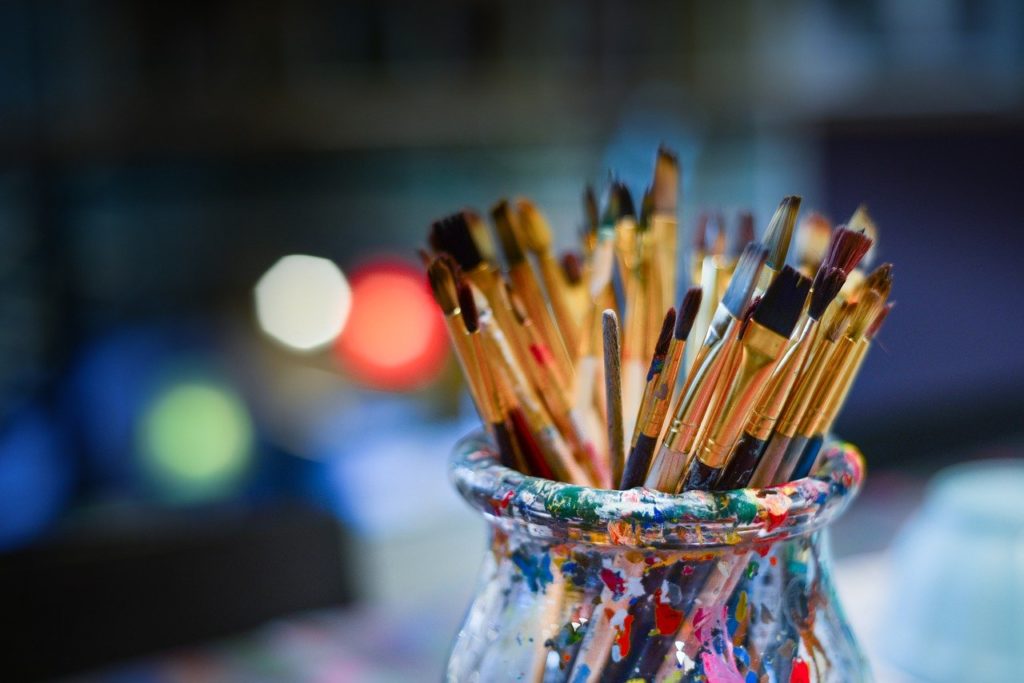In the popular imagination, art and science are often portrayed as opposites. An artistic person is said to be ‘right-brained,’ spontaneous, letting their imagination flow freely and running along with it. On the other hand, a scientist is ‘left-brained,’ analytical, precise, and bound to follow standard procedures that lead to optimal results.
Yet scientific studies have shown little evidence for lateralization in the brain to support such popular theories of left- or right-brain dominance and their corresponding personality types. In fact, art and science can not only coexist but thrive in terms of an individual’s skill set and pursuits.
This happens because both of these domains rely heavily on creativity. And while the creative process in art is largely a matter of trial and error, sometimes mixed with a bit of mysticism, scientists naturally have studied it in detail. Thus, any aspiring artist would do well to learn a few things from what science has to say about boosting creativity.
Science as a starting point
The internet abounds with resources on how to improve one’s creativity. This isn’t surprising, as creativity has transcended disciplines to become a highly valued attribute in any field. But it does present a challenge in terms of having to filter out information from unreliable sources.
Scientific research has found strong associations between creativity and certain characteristics of individuals. Specific to the creative ‘flow’ state, people tend to have a combination of clear goals, immediate feedback, a balance between skill and challenge level, and merging action and awareness.
Simultaneously, flow is enabled by the absence of distractions, self-consciousness, fear of failure, and the sense of time itself. Above all, the creative activity must be autotelic, or something you’d enjoy for its own sake.
Artists would hardly struggle with that last aspect. But they may encounter difficulties with the other characteristics of the flow state, and those are opportunities you can improve upon. Working in a tech-free retreat, for example, can help you lose track of time and eliminate distractions.
Other research has indicated that increasing creativity can begin with something called ‘psychological distance.’ This refers to how you think about a particular problem or object. Seeing it from someone else’s perspective, for instance, makes it less concrete and more abstract. It’s an exercise any artist can practice to improve their craft.

The limitations of science
You can use these science-backed tips as a reference point for getting better at any artistic activity. But you also have to beware of the limitations of scientific studies when it comes to personal application.
Valid scientific research can’t be conducted without dedication to rigor. The situation regarding Covid-19 is a perfect example of that. The world is desperate for a vaccine. But medical companies and researchers must conduct SARS-CoV-2 biochemical screening, animal testing, and three-phase clinical trials in humans before potential regulatory approval.
Understanding why rigorous study is so important to science makes it easier to grasp why research on creativity can’t be generalized. Everyone thinks differently. What sparks creativity in one person might draw a blank in someone else. This is why most research comes with caveats, and conclusions stop short of anything more definitive than correlations or associations.
Taking charge of inquiry
This doesn’t mean that science can’t be of further use to artists who’d like to become more creative. It merely entails taking charge of the process and conducting your own experiments.
The scientific method might seem foreign to an artist’s way of thinking. But there’s actually a lot of overlap between art and science in this regard. Artists create by building upon and in response to the works of those before them. Scientists formulate hypotheses and conduct tests after reviewing the relevant literature. For both, it’s a process of inquiry.
What do people say about boosting creativity? Some will tell you to take a walk, for example, to overcome a creative block. Most artists won’t mind giving that a try and seeing if it works.
What you can do differently is to apply science. Conduct a study on yourself with only walking as the variable. Keep the rest of your routine fixed, and take note of the results over an extended period.
At the end of this period, a month, for instance, go over your notes. How many days out of 30 did walking actually lead to ideation? Was the quality or speed of ideation better than before you started walking? Can you test for other factors, such as length of the walk, time of day, or route taken?
Take charge of your inquiries into a better creative process. Using scientific principles, you can separate fact from fiction and find out what can really make you a more creative artist.
